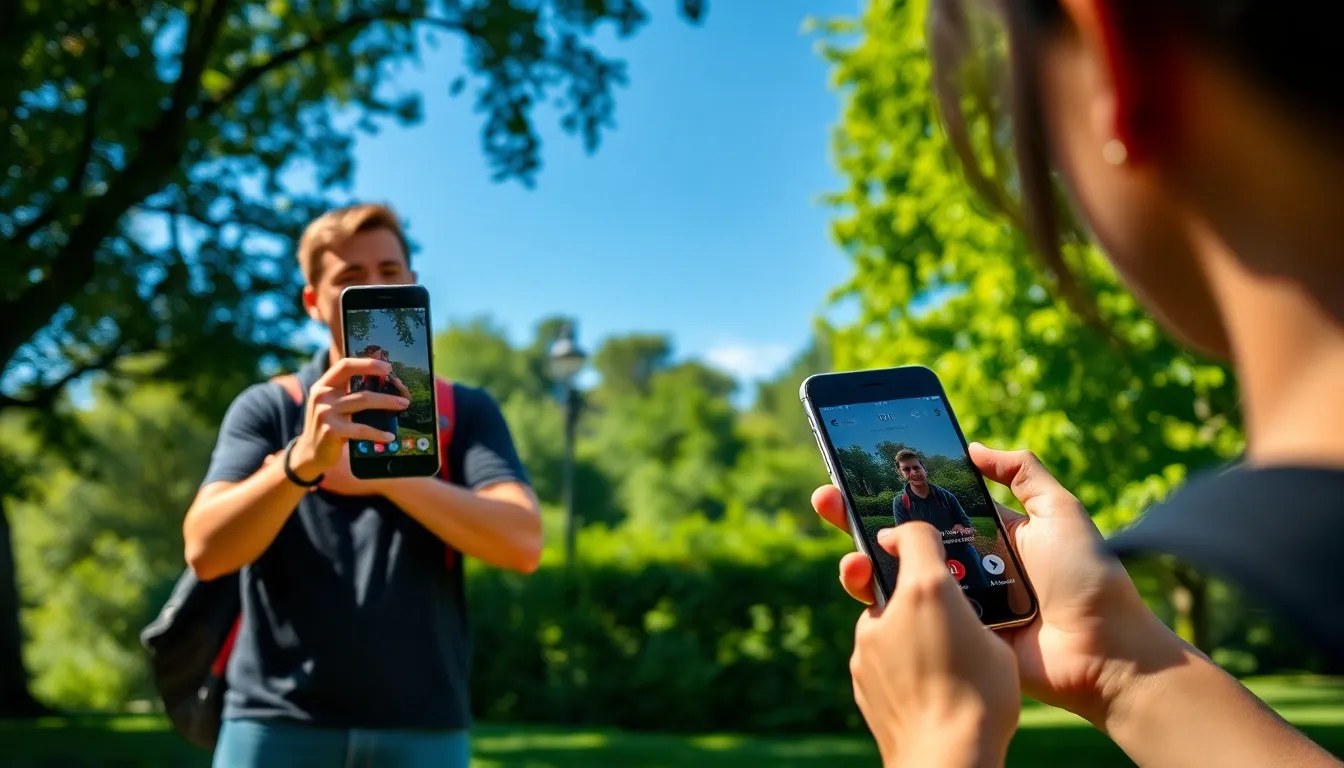In a world where everyone seems to be glued to their smartphones, sharing your location shouldn’t feel like rocket science. Whether you’re trying to coordinate a meetup or just want to let your friends know you haven’t been abducted by aliens, knowing how to share your location between an iPhone and an Android can save the day.
Table of Contents
ToggleUnderstanding Location Sharing
Location sharing enhances communication by allowing users to share their real-time location with others. Sharing location can simplify planning, ensuring friends or family know where to meet. This feature serves various functions, from enjoying outdoor activities together to ensuring loved ones’ safety.
Apple’s Location Services and Google Maps provide several ways to share locations. Users on iPhone can utilize Apple Maps, which supports sharing directly via the messaging app, whereas Android users can use Google Maps for seamless sharing. Both platforms enable sharing to anyone, regardless of their device brand.
Privacy remains a significant aspect of location sharing. Many users may worry about who sees their location information. Both iPhone and Android devices present options to control and limit sharing duration. To enhance safety, it’s wise to share locations only with trusted contacts.
Different apps also facilitate location sharing naturally. WhatsApp, for example, allows users to share live locations, bridging the gap between device ecosystems. Users must remember, however, that internet access is essential for sharing location data effectively.
Familiarity with these features leads to smoother interactions between device users. Understanding how each platform operates ensures efficient location sharing. Both iPhone and Android users benefit from enhancing their connectivity, making real-time location sharing a vital tool today.
Options for Sharing Location

Sharing location between iPhone and Android devices offers several methods. Users can choose between built-in features or third-party apps, each providing unique benefits for connectivity.
Using Built-in Features
Apple Maps serves as the primary tool for sharing location from iPhones. To share, users can open the app, select the destination, and tap on the share icon. This action allows them to send their location via Messages, Mail, or other supported applications. On the Android side, Google Maps offers similar functionality. By selecting the current location and tapping “Share your location,” users can determine how long to share and with whom, ensuring secure sharing. Both platforms require internet access for effective operation, enhancing coordination.
Third-Party Apps
Numerous third-party apps allow seamless location sharing across devices. WhatsApp stands out as a popular choice, enabling users to share their real-time locations easily. To send their location, users simply select the attachment option in a chat and choose “Location.” Snapchat provides another engaging method, allowing location sharing through Snap Map for friends within the app. Users can adjust privacy settings to ensure safety while keeping contacts informed. Such applications bridge the gap between iPhone and Android, making location sharing instant and efficient.
Step-by-Step Guide for Sharing Location
Sharing location between iPhone and Android devices is simple. Users can choose from several effective methods to do this.
Sharing via Apple Maps
Apple Maps allows iPhone users to share their location quickly. Start by opening the app and tapping the blue dot that represents your location. Select the “Share My Location” option from the menu. Then, choose the method to share, whether via Messages, Mail, or another app. The recipient will receive a link showing your real-time location. This sharing feature is adjustable, letting users choose to share for a specific time frame. Safety concerns are mitigated by controlling who has access to location data.
Sharing via Google Maps
Google Maps simplifies location sharing for Android users. Launch the app and tap on the blue dot that shows your position. Click on “Share your location” to initiate the process. Users can select contacts from their phone or choose a sharing duration. Options include sharing through various apps or via a link. Recipients can then view the sharer’s live location, enhancing safety and communication. This user-friendly feature ensures that sharing location remains convenient across devices.
Privacy Considerations
Location sharing presents critical privacy considerations that users must keep in mind. First, it is essential to control who can see a shared location. Only trusted contacts should receive this information to maintain safety and privacy.
Users can decide on the duration of location sharing. Setting a specific time limit helps minimize risks associated with long-term visibility. Engaging in temporary sharing is advisable for spontaneous meetups, while permanent sharing may expose users to unnecessary risks.
It’s crucial to check the app settings regularly. Apps like Apple Maps and Google Maps offer customizable options for managing privacy settings. Users should Be aware of the potential implications of unknowingly sharing their location with a broader audience.
Permissions are another critical aspect of privacy. Granting location access to third-party apps requires careful consideration. Users often overlook the settings, which can lead to unintended sharing of their location.
Choosing a suitable application also matters. Some apps prioritize user privacy more effectively than others, offering additional features for securing data. Familiarity with app features empowers users to make informed decisions.
Lastly, regular reviews of sharing habits can enhance privacy awareness. Being mindful of where and with whom location is shared reduces the likelihood of safety breaches. Maintaining these practices enables more secure, responsible location sharing across devices.
Sharing location between iPhone and Android devices is a practical way to enhance communication and ensure safety. With tools like Apple Maps and Google Maps users can easily share their real-time location with trusted contacts. By understanding the available methods and privacy settings users can maintain control over their information while enjoying the benefits of location sharing.
It’s essential to choose the right apps and regularly review sharing permissions to protect privacy. This approach not only simplifies planning but also fosters a sense of security among friends and family. Embracing these features can lead to a more connected and informed experience in today’s mobile world.








